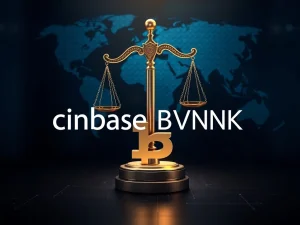Unlocking the Future: RBI CBDC Pilots Expand with New Digital Rupee Use Cases

Are you watching the evolution of digital currencies closely? India is making significant strides, and the Reserve Bank of India (RBI) is at the forefront, actively expanding its pilots for the official **digital rupee**, known as the Central Bank Digital Currency (CBDC). This isn’t just about creating a digital version of cash; it’s about exploring new possibilities for how money can work, potentially transforming payments and boosting **financial inclusion** across the nation.
What’s New with the **RBI CBDC** Pilots?
According to the RBI’s Annual Report for 2024–25, the central bank is set to introduce several innovative features and use cases for both its retail (e₹-Retail) and wholesale (e₹-Wholesale) digital rupee initiatives. The core focus is on enhancing functionality and reach.
Key developments highlighted include:
- **Programmability:** This feature allows payments to be automated and conditional. For example, government subsidies could be programmed to be spent only on specific goods or services, or corporate spending could be controlled more granularly.
- **Offline Capabilities:** Recognizing that internet access is not universal, the RBI aims to enable digital rupee transactions even without connectivity. This is crucial for extending the benefits of **India digital currency** to remote areas and ensuring reliability.
- **Expanded Reach:** The e₹-Retail pilot has grown, now involving 600,000 users across 17 banks. To accelerate adoption, the RBI has also allowed certain non-bank entities to offer CBDC wallets.
- **Increased Institutional Interest:** The e₹-Wholesale pilot, designed for interbank settlements, has seen its scope broadened with the inclusion of four standalone primary dealers (SPDs).
Exploring New **CBDC Use Cases**
The introduction of programmability and offline features directly targets new applications for the **digital rupee**. These aren’t just technical upgrades; they are foundational for specific scenarios:
| Feature | Potential Use Cases | Benefit |
|---|---|---|
| Programmability | Targeted government subsidies, corporate expense management, smart contracts for payments | Ensures funds are used as intended, improves transparency and efficiency |
| Offline Capability | Payments in areas with poor connectivity, resilience during network outages, enhancing **financial inclusion** | Increases accessibility and reliability, especially for underserved populations |
These developments signal a clear intention by the RBI to move beyond basic digital transactions and leverage the unique potential of a CBDC to address specific economic and social goals. The focus on **CBDC use cases** like targeted welfare payments underscores the drive towards greater efficiency and accountability in public spending.
How Does This Fit into India’s Digital Payment Landscape?
India already boasts a thriving digital payment ecosystem, largely powered by the Unified Payments Interface (UPI). The RBI’s report notes significant growth, with digital payments increasing by 34.8% in volume and 17.9% in value in the last financial year. India holds a dominant 48.5% share of global real-time payments by volume, thanks to UPI.
The **digital rupee** is envisioned not as a replacement for systems like UPI but as a complementary form of money. While UPI facilitates transactions between bank accounts, the CBDC represents a direct liability of the central bank, similar to physical cash but in digital form. This distinction is crucial for its role in wholesale settlements and potentially for enabling the advanced features being explored.
Driving **Financial Inclusion** with the **Digital Rupee**
A key objective behind the **India digital currency** initiative is enhancing financial inclusion. The ability to conduct transactions offline is a major step towards this, reaching individuals in rural or remote areas where stable internet might be a challenge. Furthermore, simplifying access through non-bank wallets could lower barriers to entry for those outside the traditional banking system.
By expanding the pilot to include more users, banks, and now non-banks, the RBI is gathering crucial data and feedback necessary to refine the **digital rupee** and ensure it meets the diverse needs of India’s population. The aim is to create a digital form of money that is accessible, safe, and efficient for everyone.
The Broader Context: Crypto Regulation in India
While the RBI pushes forward with its official **India digital currency**, the regulatory landscape for private cryptocurrencies like Bitcoin remains complex. The Supreme Court recently raised concerns about the lack of comprehensive regulation despite the existing 30% tax on crypto profits. This highlights the government’s cautious approach to decentralized digital assets while actively developing its own centralized digital currency.
India has a significant number of digital asset holders, estimated to be over 100 million. The ongoing discussions around crypto regulation run parallel to the development of the **RBI CBDC**, reflecting the multifaceted nature of digital finance in the country.
Conclusion: A Step Towards a More Digital Future
The Reserve Bank of India’s plan to introduce new features like programmability and offline capabilities into its **digital rupee** pilots marks a significant step in the evolution of **India digital currency**. By focusing on practical **CBDC use cases** and expanding accessibility, the RBI aims to enhance the efficiency of payments and deepen **financial inclusion**. While the journey is ongoing, these developments demonstrate a clear commitment to exploring the potential of a central bank digital currency in one of the world’s largest economies.







